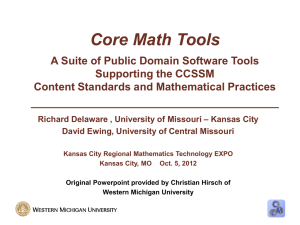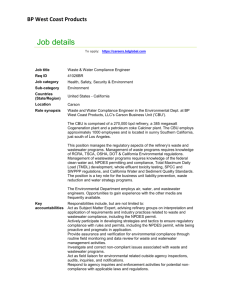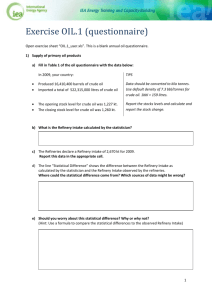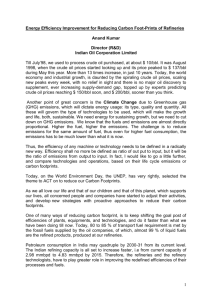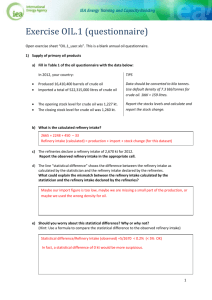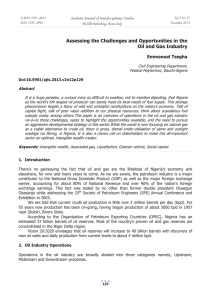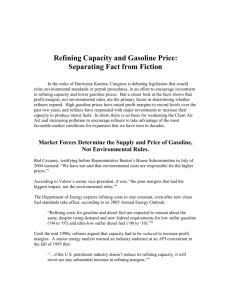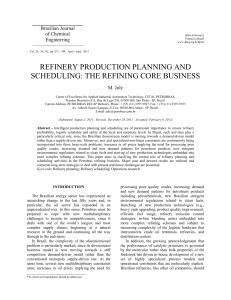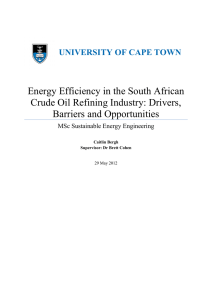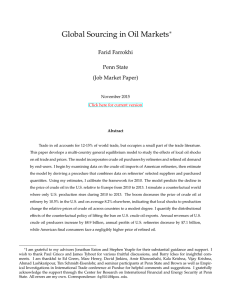OPERATION RESEARCH I
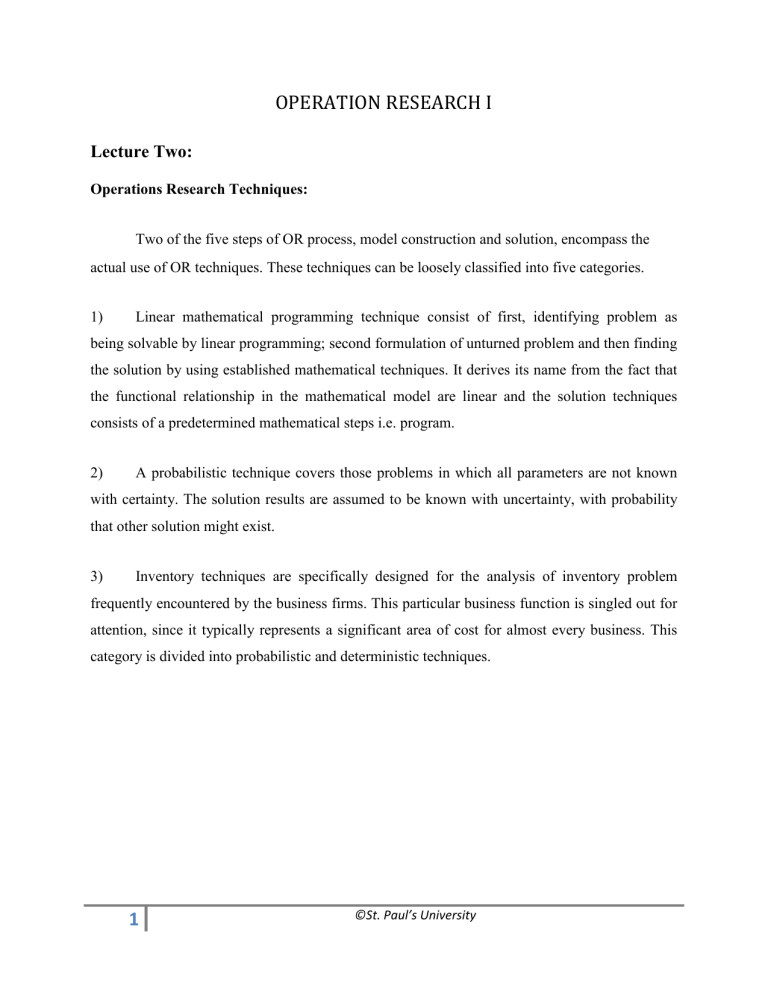
OPERATION RESEARCH I
Lecture Two:
Operations Research Techniques:
Two of the five steps of OR process, model construction and solution, encompass the actual use of OR techniques. These techniques can be loosely classified into five categories.
1) Linear mathematical programming technique consist of first, identifying problem as being solvable by linear programming; second formulation of unturned problem and then finding the solution by using established mathematical techniques. It derives its name from the fact that the functional relationship in the mathematical model are linear and the solution techniques consists of a predetermined mathematical steps i.e. program.
2) A probabilistic technique covers those problems in which all parameters are not known with certainty. The solution results are assumed to be known with uncertainty, with probability that other solution might exist.
3) Inventory techniques are specifically designed for the analysis of inventory problem frequently encountered by the business firms. This particular business function is singled out for attention, since it typically represents a significant area of cost for almost every business. This category is divided into probabilistic and deterministic techniques.
1 ©St. Paul’s University
4) Network techniques consist of models that are represented by diagrams rather than strictly mathematical relationship i.e. pictorial representation of the system under consideration.
These models can represent either probabilistic or deterministic systems.
5) Other techniques consist of all the remaining techniques, which do not come under the four heads mentioned above. For example, Dynamic programming employs a different modeling and solution logic than linear programming. In non-linear programming either the objective function or the constraints or both can be non-linear functions, which would require altogether different solution technique.
2 ©St. Paul’s University
USES OF OPERATIONS RESEARCH
In its recent years of organized development, OR has entered successfully many different areas of research for military government and industry in many countries of the world. The basic problem in most of the developing countries in Asia and Africa is to remove poverty and improve the standard of living of a common man as quickly as possible. So there is a great scope for economists, statisticians, administrators, politicians and the technicians working in a team to solve this problem by an OR approach. The possible application sectors, in Pakistan, are as under:-
1) Macro Economic Planning:
OR can be employed for Macro-Economic Planning of the country: a) Input / Output Analysis: by using LP models. This input/output analysis can be of any duration [i.e. of short term (up to say 10 years)-Five Year
Plan; and of long term (10-30 years)]. b) Investment Planning: OR can be employed in the Investment Planning of the country where investment plans for the next five or ten years are prepared. Mixed Integer Programming and Linear Programming techniques can be used. c) Choice of Projects: OR can help the people in the planning in choosing the optimal project. This sort of choice would need Integer Programming and
Quadratic Assignment techniques. d) OR can also be used in Simulation Modeling of the Economy of the country.
3 ©St. Paul’s University
2) Sectoral Planning:
OR can also be employed in a particular sector of the Economy, e.g. in agriculture, in finance, in industry, in marketing, in production, in management etc. a) Scheduling all operations within a sector can be done by using OR e.g. production scheduling + Distribution planning + marketing + Personnel management + maintenance. b) Schedule of some operations within a sector can be done by employing
OR e.g. Inventory planning in agriculture or distribution of fertilizer etc.
3) Micro Economic Planning:
This sort of activity involve for example:
Planning the operations of a Company. Improving the layout of a workshop in a company.
Finding sizeof a hospitalin an area etc. There is a great potential for utilizing OR in this area of planning in our country.
POTENTIAL AREAS OF APPLICATIONS
As mentioned earlier OR can be applied in every field of life. Here are few of the many fields where OR has potential application. This list is by no means comprehensive or exhaustive but definitely will provide an idea of the power of OR as a separate discipline.
4 ©St. Paul’s University
Operations Research in the Public Sector
Federal, Provincial and Local Government
Development of Country Structure Plans
Manpower Planning and Career Development in Govt. Departments
Organization of Long-Term planning groups at the National Level
Corporate Planning in Local Government
Allocation of Government Houses
Estimation of Future Requirement of School/College Building
Placing of Fire Brigade in a City
Measuring the Effectiveness of Police
Timetabling in Schools and Colleges for Efficient use of Space
Health
Management policies for 120-bed nursing units
Optimum size of general hospitals
Appointment systems for hospital outpatients
Stock control for regional and area health units
National and area planning of health services
Manpower planning for nurses, radiographers, etc.
Commissioning of a new general hospital
Simulation of pathology laboratories
Organizing an ambulance service
Care provided by community nurses
5 ©St. Paul’s University
Defense
Arms control and disarmament studies
Communications network development
Logistic support in operations
Field experimentation
War games and other models of battle
Equipment procurement
Reinforcement and redeployment problems
Operations Research in Industry & Commerce
Finance and Investment
Developing the five-year plan for a food manufacturer
Development of the pipeline
Computer based financial planning
Portfolio selection
Structure for the assets of a bank
Evaluating investment in a new plant
Corporate planning in the chemical industry
Financing expansion of a small firm
Production
Production scheduling in a steel works
Meeting peak demands for electricity
Minimization of costs of power station maintenance
Scheduling newsprint deliveries
6 ©St. Paul’s University
Stock levels of steel plate
Meeting seasonal demands for products
Blending scrap metals
Stock policy for a paint manufacturer
Allowing for yarn breaks in spinning
Meeting customer requirements for carpets
Planning a quarry's output
Optimum layout for belt coal transport in a colliery
Marketing
Launching a new product
Advertising effectiveness and cost planning sales territories
Measurement of consumer loyalty
Buyer-seller behavior
Advertising research and media scheduling Most profitable retail brand mix Developing customer service policies
Pricing policies for confectionery
Personnel
Personnel shift planning
Manpower planning
Manpower for an assembly line
Effects of flexible working hours
7 ©St. Paul’s University
Distribution
Distribution of Products.
Returnable bottles: how many?
Refinery crude tank capacity
Depot location of pharmaceutical products
Trucking policy for dairy products
Distribution of newspapers to newsagents
OR in Transport
Rail
Rail freight management
Required fleet size of locomotives and rolling stock
Forecasting passenger traffic
Planning reconstruction of main-line termini
Introduction of freightliners
Road
Designing urban road networks
Forecasts of car ownership
Implementation of bus lanes
Re-routing bus services
Purchasing and maintenance of buses
Introduction of flat-fare buses
Bus services in rural areas
Preparation of crew rosters
8 ©St. Paul’s University
Air
Planning the introduction of Boeing 737/Airbus 300
Allocation of aircraft and crew to routes
Location of Islamabad Airport
Karachi-Lahore - Islamabad - Peshawer: aircraft requirements
Sea
Potential traffic for new container services
Shipbuilding requirement in the 1990's
Optimum ship size for given routes
Construction and management of a container terminal
EXAMPLE
Before proceeding further let us take an example, which will help to understand the scope of application in various activities. Given below are some of the major activities which
OPERATIONS:
1) Oil production from fields
2) Transportation of Crude
from fields to refineries
from fields to export ports (Jetties)
from import ports (Jetties) to refineries
9 ©St. Paul’s University
3) Storage of Crude
on fields
at Ports
at refineries
4) Refinery Scheduling
Operation of CDU's
Operation of Blending Units
5) Storage of Distilled Blended Products
at refineries
at Jetties
at distribution points
6) Transportation of Products
from Jetties to refineries
from one refinery to another for another processing
From refinery to bulk distribution pts.
From bulk distribution points to final consumers.
At all the stages from oil production from fields to its transportation to the final consumer
OR has been employed in the developed countries of the world.
Applying on macro level is notan easy job. This would require true and factual data computing power and trained professionals, and perhaps at this stage we may face some problem due to limited resources in term of manpower, money and machines, but it does not mean that we should not make a beginning.
10 ©St. Paul’s University



